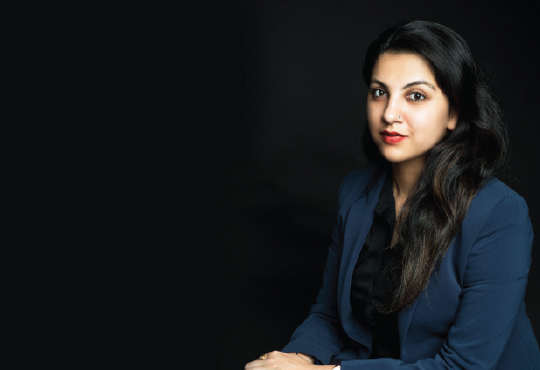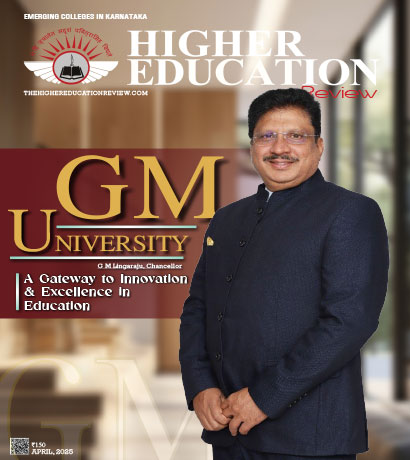VR And Smart Classes Can Be The Smart Choices For Learning

Shtakshi Tyagi , Senior Education Consultant, Veative Labs
There has been a notable change in the ways students learn over the past few years, since the advent of technological advancements. From e-learning and mobile learning to smart learning, classrooms have evolved and are not confined to traditional methods of imparting knowledge. It is evident that digitalization is having a profound impact on education. With the world literally at their fingertips, today's students need schools and teachers to re-envision the role of technology in the classroom. 21st-century learners are increasingly displaying new behaviors, skills, and expectations. Therefore, it is time to avail learners with new opportunities, by using emerging technologies, such as Virtual Reality and Augmented Reality, to further enhance the educational experience. Classrooms will now be seen as immersive and interactive spaces for smart learning.
"VR can change the way a learner interacts with the subject matter, as it provides new forms and alternate method of presentation of content"
Learning is the focus, and technology is just the conduit. VR provides a smart learning environment that puts learners at the forefront. VR-based immersive and experiential learning has the potential to create a deeper level of engagement with target topics, in a distraction-free environment. Such an environment creates chances for focus and attention on concepts, possibly heightening retention. Studies suggest that VR is playing a crucial role in creating excitement, maintaining enthusiasm and piquing the interests of students. On-the-go mentoring with a proper dosage of AI, neural networks, and smart technologies, will continue to enhance this immersive, multi-directional interactive learning environment.
Potentialities of Virtual Reality
Virtual reality has the power to enhance the way students learn and more easily understand difficult concepts in new and amazing ways. It can connect students with hands-on experiences which involve specialized skill-set training; such as welding practice, carpentry, performing simple lab experiments and much more. For instance, if a student who is learning about such a seemingly dry topic as potential and kinetic energy is afforded the opportunity to do so while taking a wild ride on a roller coaster, boredom can longer reign supreme. This topic cannot be considered dull and uninteresting. The students would eagerly want to participate in this experience, wherein they can see theories at work. VR provides the opportunity to gain real-life-like experiences, explore worlds and situations which might be difficult, impossible, dangerous or just plain expensive in real life.
VR can change the way a learner interacts with the subject matter, as it provides new forms and alternate method of presentation of content. Immersive graphics and animation can allow better visualization and offer an emulative feel. Use of three-dimensional dynamic models is particularly useful in visualizing complex structures and processes. According to Dale's cone of experience, we remember 90 percent of what we do. VR will help in building better learners who are active participants, and not passive recipients of information, which should help them to reflect on their experiences, use analytical skills to form a concept or an idea about the experience make decisions and take constructive action. VR provides for the involvement of more senses, enabling new ways of learning while fostering intuitive skills within students.
But is this enough? Without the teacher's involvement, does this really have the impact in classes that it should have? I fear not. As teachers, we need to know the level of engagement of our students and identify gaps in learning. If the VR was properly set up for academic use, it would complete the circle and provide meaningful data to a teacher. It would empower teachers to better understand a student's connection with the material being taught, see the gaps and attend those issues in a timely manner. This can only come by identifying the need to have a connection between the learner and teacher, best accomplished by the use of analytics and the reporting of student data from within the VR environment.
It can be of great benefit to teachers to have a tool such as the VR at their disposal, but only if paired with the right content. Regardless of the medium, it is uncontroversial to reassert that content is king, and always will be. Textbooks, videos, and DVDs share one thing in common, that without proper, vetted content, they will all undoubtedly end up collecting dust on a shelf. VR can suffer that same fate unless wise decisions are made with respect to content, and how and why the VR is utilized. Only then can we harness the power that this new device potentially possesses, and positively affect the learning environments and lives of our students. But the key is that it has potential. VR is not a panacea, nor is it a fad. Only wise choices will allow its true value to be realized.
Shtakshi Tyagi
Shtakshi has completed her M.Ed, M.Sc and B.Ed from institutes of good standing in India. She has worked as a school teacher and also mentored pre-service teachers in a college devoted to teacher training. She has received the Presentation Award at a National Seminar conducted by the Indian Society of Analytical Scientists, Petrotech Society, in 2011. She was acknowledged for meritorious participation in the International Conference on India's Scientific Wisdom: Emerging Worldview, in 2016. In addition, the prestigious Sri Baljit Shastri Award for the Best in Human & Traditional Values was conferred upon her, by Amity University in 2017.
"VR can change the way a learner interacts with the subject matter, as it provides new forms and alternate method of presentation of content"
Learning is the focus, and technology is just the conduit. VR provides a smart learning environment that puts learners at the forefront. VR-based immersive and experiential learning has the potential to create a deeper level of engagement with target topics, in a distraction-free environment. Such an environment creates chances for focus and attention on concepts, possibly heightening retention. Studies suggest that VR is playing a crucial role in creating excitement, maintaining enthusiasm and piquing the interests of students. On-the-go mentoring with a proper dosage of AI, neural networks, and smart technologies, will continue to enhance this immersive, multi-directional interactive learning environment.
Potentialities of Virtual Reality
Virtual reality has the power to enhance the way students learn and more easily understand difficult concepts in new and amazing ways. It can connect students with hands-on experiences which involve specialized skill-set training; such as welding practice, carpentry, performing simple lab experiments and much more. For instance, if a student who is learning about such a seemingly dry topic as potential and kinetic energy is afforded the opportunity to do so while taking a wild ride on a roller coaster, boredom can longer reign supreme. This topic cannot be considered dull and uninteresting. The students would eagerly want to participate in this experience, wherein they can see theories at work. VR provides the opportunity to gain real-life-like experiences, explore worlds and situations which might be difficult, impossible, dangerous or just plain expensive in real life.
VR can change the way a learner interacts with the subject matter, as it provides new forms and alternate method of presentation of content. Immersive graphics and animation can allow better visualization and offer an emulative feel. Use of three-dimensional dynamic models is particularly useful in visualizing complex structures and processes. According to Dale's cone of experience, we remember 90 percent of what we do. VR will help in building better learners who are active participants, and not passive recipients of information, which should help them to reflect on their experiences, use analytical skills to form a concept or an idea about the experience make decisions and take constructive action. VR provides for the involvement of more senses, enabling new ways of learning while fostering intuitive skills within students.
But is this enough? Without the teacher's involvement, does this really have the impact in classes that it should have? I fear not. As teachers, we need to know the level of engagement of our students and identify gaps in learning. If the VR was properly set up for academic use, it would complete the circle and provide meaningful data to a teacher. It would empower teachers to better understand a student's connection with the material being taught, see the gaps and attend those issues in a timely manner. This can only come by identifying the need to have a connection between the learner and teacher, best accomplished by the use of analytics and the reporting of student data from within the VR environment.
It can be of great benefit to teachers to have a tool such as the VR at their disposal, but only if paired with the right content. Regardless of the medium, it is uncontroversial to reassert that content is king, and always will be. Textbooks, videos, and DVDs share one thing in common, that without proper, vetted content, they will all undoubtedly end up collecting dust on a shelf. VR can suffer that same fate unless wise decisions are made with respect to content, and how and why the VR is utilized. Only then can we harness the power that this new device potentially possesses, and positively affect the learning environments and lives of our students. But the key is that it has potential. VR is not a panacea, nor is it a fad. Only wise choices will allow its true value to be realized.
Shtakshi Tyagi
Shtakshi has completed her M.Ed, M.Sc and B.Ed from institutes of good standing in India. She has worked as a school teacher and also mentored pre-service teachers in a college devoted to teacher training. She has received the Presentation Award at a National Seminar conducted by the Indian Society of Analytical Scientists, Petrotech Society, in 2011. She was acknowledged for meritorious participation in the International Conference on India's Scientific Wisdom: Emerging Worldview, in 2016. In addition, the prestigious Sri Baljit Shastri Award for the Best in Human & Traditional Values was conferred upon her, by Amity University in 2017.

